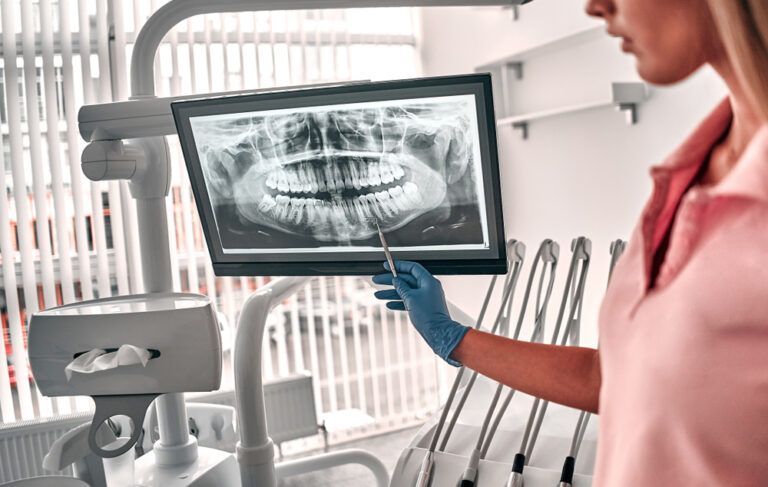Orthodontic Technology: Advancements and Innovations

The field of orthodontics has seen remarkable advancements in recent years, transforming the way patients experience treatment. At Massih Orthodontics in Glendale, CA, Dr. Karmen Massih leverages the latest technologies to provide patients with more efficient, comfortable, and effective orthodontic care. Whether you’re considering braces for the first time or you’re already undergoing treatment, understanding these technological innovations can help you appreciate how far orthodontics has come—and how it can benefit your smile.
The Evolution of Orthodontic Treatment
Orthodontics has a rich history, dating back to ancient civilizations where early attempts at straightening teeth involved rudimentary tools and techniques. Over the centuries, the field has evolved significantly, with major breakthroughs occurring in the 20th century, such as the introduction of stainless steel braces and the development of modern retainers. Today, orthodontics is at the forefront of dental technology, offering a range of advanced options that cater to the needs and preferences of each patient.
1. Digital Impressions: Say Goodbye to Goop
One of the most significant advancements in orthodontics is the shift from traditional dental impressions to digital impressions. In the past, getting an impression of your teeth meant biting into a tray filled with a putty-like material, which many patients found uncomfortable. Digital impressions have revolutionized this process.
How It Works: Using a handheld scanner, Dr. Karmen Massih can create a precise 3D model of your teeth in minutes. This technology not only enhances patient comfort but also improves the accuracy of the treatment plan. The digital model can be easily shared with other specialists or used to design custom orthodontic appliances.
Benefits:
- Increased Comfort: No more messy, uncomfortable trays.
- Enhanced Accuracy: Digital models provide more precise data, leading to better-fitting appliances.
- Faster Treatment Planning: The digital files can be sent instantly, speeding up the overall treatment process.
2. Clear Aligners: A Discreet Alternative to Braces
Clear aligners, such as Invisalign, have become a popular choice for patients seeking a more discreet orthodontic treatment. These virtually invisible trays are custom-made to fit snugly over your teeth, gradually moving them into the desired position.
How It Works: Patients receive a series of aligners, each worn for about two weeks before moving on to the next set. The aligners are designed based on a digital model of your teeth, ensuring a precise fit and efficient tooth movement.
Benefits:
- Discreet Appearance: Clear aligners are nearly invisible, making them an ideal option for adults and teens concerned about aesthetics.
- Removable: Aligners can be taken out for eating, brushing, and flossing, allowing for better oral hygiene.
- Comfortable: Smooth plastic trays are less likely to cause irritation compared to traditional braces.
3. Self-Ligating Braces: Reducing Treatment Time
Self-ligating braces represent another major innovation in orthodontic technology. Unlike traditional braces that use elastic bands to hold the archwire in place, self-ligating braces feature a built-in clip mechanism that does the job more efficiently.
How It Works: The clip system allows the archwire to move more freely, reducing friction and pressure on the teeth. This can result in shorter treatment times and fewer adjustment appointments.
Benefits:
- Shorter Appointments: Without the need for elastic bands, adjustments are quicker.
- Faster Treatment: The reduced friction allows teeth to move more efficiently.
- Less Discomfort: The lower pressure on teeth makes self-ligating braces more comfortable for many patients.
4. Temporary Anchorage Devices (TADs): Precision Movement
Temporary Anchorage Devices (TADs) are small titanium anchors that are temporarily placed in the mouth to assist in tooth movement. They provide a stable anchor point, allowing for precise control over the movement of specific teeth.
How It Works: TADs are inserted into the bone and connected to the teeth needing movement. They remain in place until the desired tooth movement is achieved and are then removed.
Benefits:
- Targeted Tooth Movement: TADs provide precise control, making complex movements easier to achieve.
- Faster Results: By anchoring specific teeth, TADs can expedite treatment times.
- Minimally Invasive: The placement and removal of TADs are simple and cause minimal discomfort.
5. 3D Printing: Custom Appliances on Demand
3D printing has opened new possibilities in the customization of orthodontic appliances. From retainers to aligners to indirect bonding trays, 3D printing technology allows for the rapid production of precise, personalized orthodontic tools.
How It Works: Once a digital impression of your teeth is made, the data is used to design and print custom orthodontic appliances. This process can be completed in a fraction of the time it would take to create these devices using traditional methods.
Benefits:
- Speed: 3D printing significantly reduces the time needed to produce custom appliances.
- Precision: Customization ensures a perfect fit, enhancing comfort and effectiveness.
- Innovation: The ability to quickly iterate designs means more innovative and effective treatment solutions.
6. Accelerated Orthodontics: Faster Treatment with Advanced Techniques
Accelerated orthodontics is an approach that combines traditional orthodontic techniques with advanced technologies to shorten the overall treatment time. Methods such as micro-osteoperforation, vibration devices, and photobiomodulation are used to stimulate bone remodeling, allowing teeth to move more quickly.
How It Works:
- Micro-Osteoperforation: Small perforations are made in the bone to stimulate the body’s natural healing response, accelerating tooth movement.
- Vibration Devices: Gentle vibrations are applied to the teeth, enhancing cellular activity and promoting faster movement.
- Photobiomodulation: Low-level laser therapy stimulates cellular activity in the bone and gums, reducing treatment time.
Benefits:
- Reduced Treatment Time: These methods can significantly shorten the duration of orthodontic treatment.
- Improved Comfort: Accelerated treatments often result in less discomfort.
- Better Outcomes: Faster movement can enhance the overall effectiveness of the treatment.
Embracing the Future of Orthodontics
Orthodontic technology is continuously evolving, offering patients more options and better outcomes than ever before. At Massih Orthodontics in Glendale, CA, Dr. Karmen Massih is committed to staying at the forefront of these advancements to provide the highest level of care. Whether you’re considering clear aligners, self-ligating braces, or any other modern treatment option, you can trust that you’re receiving state-of-the-art care designed to deliver outstanding results.
The future of orthodontics is bright, and with these innovations, achieving a beautiful, healthy smile has never been more accessible or comfortable. If you’re ready to explore the possibilities of modern orthodontic treatment, contact Massih Orthodontics today to schedule a consultation with Dr. Karmen Massih.
Sources:
- Graber, T. M., Vanarsdall, R. L., & Vig, K. W. L. (2016). Orthodontics: Current Principles and Techniques. Elsevier.
- Proffit, W. R., Fields, H. W., & Sarver, D. M. (2018). Contemporary Orthodontics. Elsevier.
- Ngan, P., & Huang, G. J. (2019). Treatment of Class II Malocclusion in the Mixed Dentition. Seminars in Orthodontics.

Recent Comments